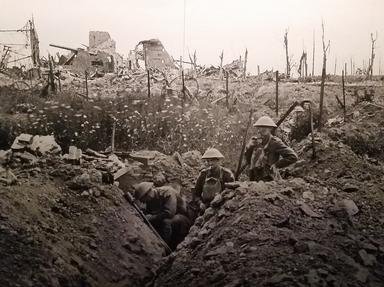Quiz Answer Key and Fun Facts
1. In May 1911, ten men in Serbia formed a secret society, which was later instrumental in the assassination of Archduke Ferdinand. What was the name of this society?
2. In Britain which organization involved women encouraging men to volunteer to fight effort by giving them a symbolic trinket?
3. In 1917 the German Army Air Service created the "Jagdgeschwader" fighter group. This group was known by what nickname?
4. Who persuaded Russian leader Alexander Kerensky to form a Women's Battalion?
5. On what day in 1914 did the soldiers on the two sides spontaneously organize a cease-fire on the Western Front?
6. Which area (or region) did the Russian Army's Plan 19 attack?
7. Which country declared war on Germany on April 6th, 1917?
8. The German Government asked which US President for a ceasefire on October 4th 1918?
9. What was a "Big Bertha"?
10. At the Paris Peace Conference, five treaties emerged that dealt with the defeated powers. The five treaties were named after Paris suburbs (and places near Paris). What were they?
Source: Author
choconette
This quiz was reviewed by FunTrivia editor
bloomsby before going online.
Any errors found in FunTrivia content are routinely corrected through our feedback system.


